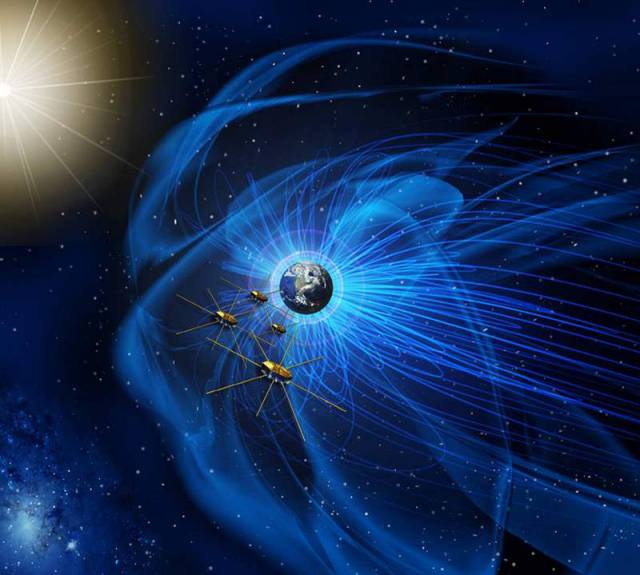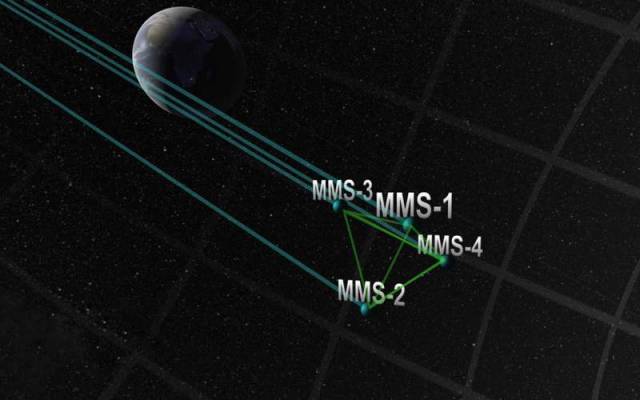The four NASA satellites of the Magnetospheric Multiscale mission just broke a record, by flying now at their smallest separation, the tightest multi-spacecraft formation ever flown in orbit.
The four spacecraft are just six miles apart, flying in what’s called a tetrahedral formation, with each spacecraft at the tip of a four-sided pyramid. The close formation is all the more impressive as the spacecraft speed along at up to 15,000 miles per hour and – with their booms extended – each spacecraft covers as much area as a professional baseball stadium.
This four-sided pyramid formation is imperative to achieve the science goals of the Magnetospheric Multiscale mission, known as MMS. MMS directly measures the space environment at the boundaries of Earth’s magnetic bubble, the magnetosphere, where the sun’s constant stream of magnetized solar wind collides with Earth’s own magnetic field. The tetrahedral formation allows the mission to track events in three dimensions. As it flies through these magnetic collisions, MMS can use its four spacecraft to determine how a given event moves in three dimensions or changes over time. If all four spacecraft moved in a line or a plane, MMS wouldn’t be able to observe the full 3D shape of a structure as it flies through.
Tom Moore, MMS project scientist at NASA’s Goddard Space Flight Center in Greenbelt, Maryland, said:
“Moving MMS into this tight tetrahedron formation is a huge milestone for NASA. We are incredibly excited to be getting on with science analysis after all the testing we have done since our launch in March.”
Images credit NASA
Read more at NASA







Leave A Comment